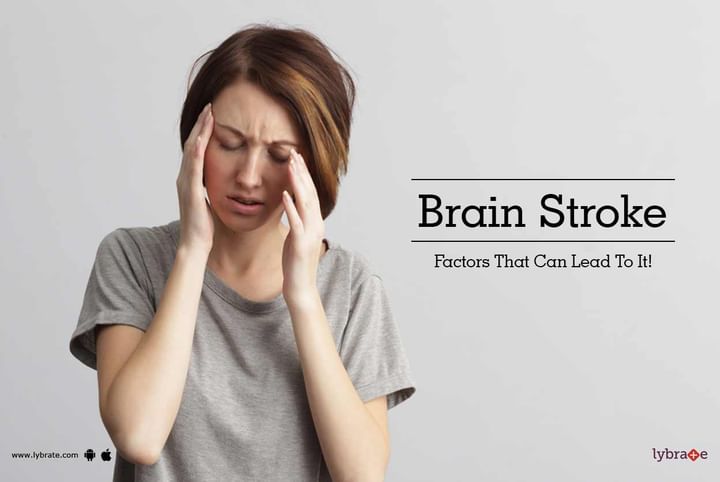Brain Stroke - Factors That Can Lead To It!
A stroke, also called cerebrovascular accident (CVA), cerebrovascular insult(CVI), or brain attack, occurs when a part of the brain is deprived of blood flow. When the brain cells are deprived of oxygen they begin to die. When brain cells die, the functions controlled by that part of the brain also stops, which results in different types of disabilities among stroke survivors.
There are two types of strokes
- Hemorrhagic
- Ischemic stroke
The first is caused when a brain aneurysm or a weak blood vessel bursts. Most of the time, this type of stroke leads to death. The second one happens when a clot blocks the flow of blood to the brain. Patients suffering from stroke suffer from various side-effects, the most common ones being paralysis or loss of feeling in a certain part of the body, problem in understanding or talking and loss of vision in one side. The side-effects start showing up regularly after a person has had a stroke.
In certain conditions, blood flow to a certain part of the brain stops for only some time and hence the body suffers stroke like symptoms which only last a couple of hours before disappearing. This is known as a transient ischemic attack (TIA). Unfortunately, the effects of a stroke can be debilitating and also permanent. Hence its important to know the symptoms of a stroke and rush the patient to a doctor as soon as possible. Sometimes early treatment can save a lot of damage.
The primary symptoms of stroke are as follows:
- Confusion and problems with talking and comprehension
- Headache along with alteration of consciousness or vomiting
- Numbness of the face, arms or legs, especially on one side of the body
- Issue with seeing, in one or both eyes
- Inability to walk with stability, including disrupted coordination
- Problems with the bladder and bowel control
- Acute depression
- Body temperature fluctuates, and pain worsens with movement
- Paralysis on one side of the body along with fatigue
- Problem in expressing or controlling emotions
Risk Factors:
- Hypertension
- Diabetes
- Increased Cholesterol
- Smoking
- Obesity
- Sedentary Lifestyle
Diagnosis of stroke
Several tests are carried out to determine the type of stroke acquired. They are:
- Physical examination, which involves observing the patient's overall condition.
- Blood tests
- CT scans
- MRI scans
- Cerebral angiogram
- Echocardiograms
Stroke is a fatal brain disease and can cause permanent damage to your system so its best to check with your Neurologist to know how you can prevent it.



+1.svg)
